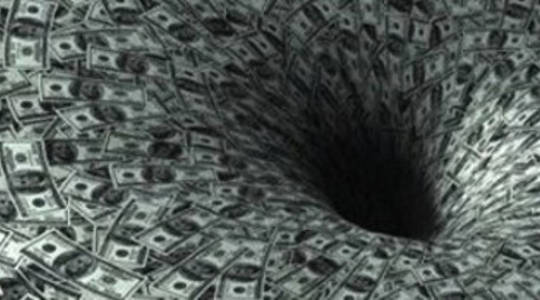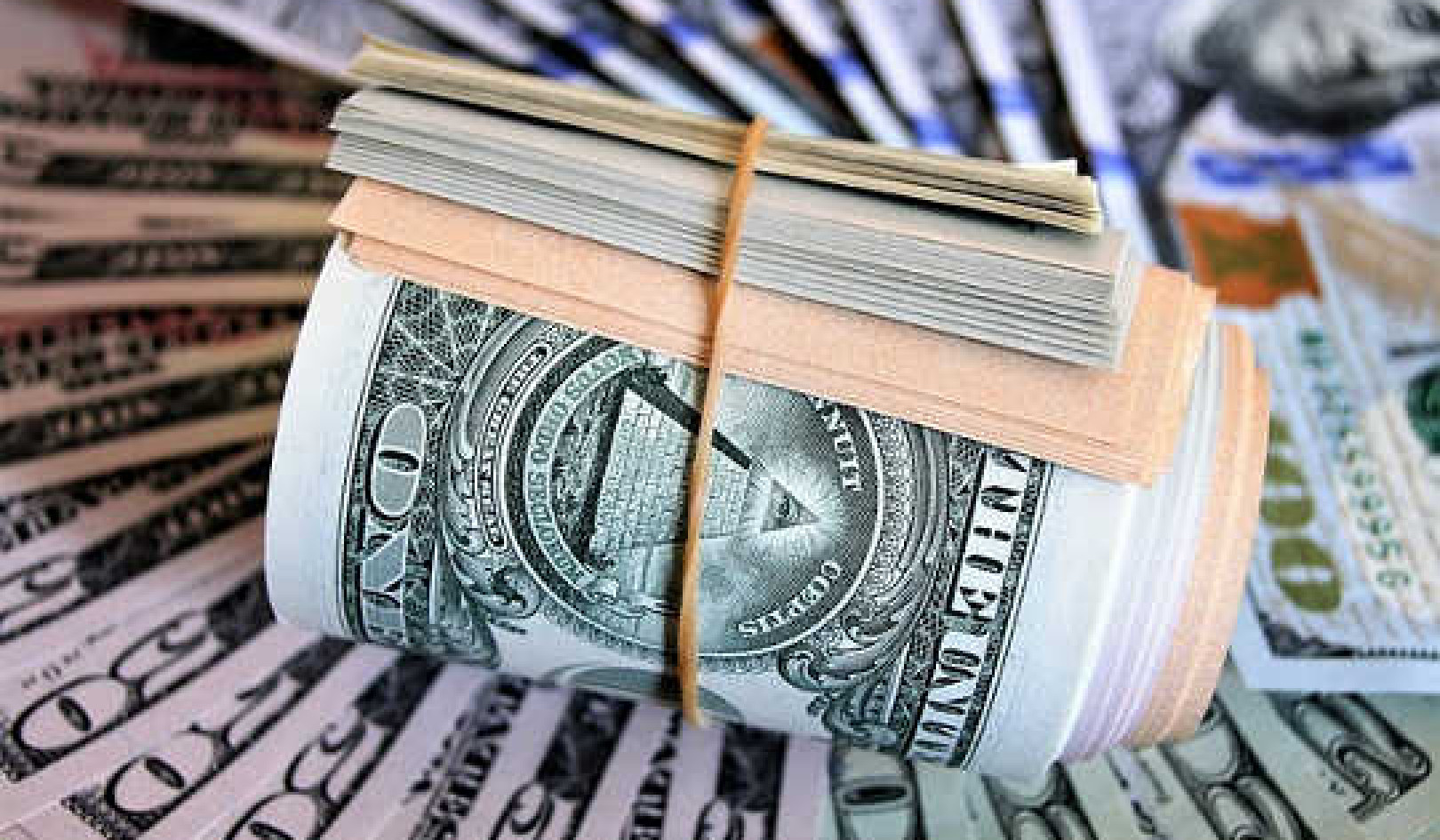
Nine years ago, I started living a more bountiful life by working less, earning less, and spending less. I started by going to my employer’s human resources department to ask if I might take a significant pay cut. “How significant?” they asked. I said, “I’m not sure yet; maybe 75 percent?”
As you can imagine, this was not the sort of request they were used to, but they gave it their best shot. How did I come to make such a strange request? A little over nine years ago, the war on Iraq began. Along with many other people, I was horrified at the magnitude of the suffering the U.S. would inflict with its “shock and awe” campaign, and also at the increasingly blind, ignorant, and bloodthirsty war fever that dominated our country.
But I also knew that as a taxpayer I was a small but vital part of the monster we were unleashing, and that no matter how much I protested, as long as I continued to pay taxes, I was — in a practical, bottom-line sense — a war supporter. I had a hard time getting to sleep at night and looking myself in the mirror in the morning. I knew I had to stop supporting the war, if only for my own peace of mind.
But how? My major financial contribution to the war was from the federal income tax which was automatically withheld from each paycheck before I even saw it. If I were to stop this withholding by filing a new W-4 form with more allowances, this would just delay the inevitable. Come April, the IRS would realize they’d been underfed and would come after me or my employer to seize the rest.
I decided instead to get “under the tax line,” reasoning that the best way not to pay income tax is not to owe any to begin with. So that’s why I visited my H.R. department. But they said they couldn’t help me — such a radical pay cut might look suspicious to auditors and cause problems of some sort for the company.
Living Under the Tax Line
So I quit my job where I’d been earning roughly $100k, and now I’m self-employed doing contract work and writing books. When I started, I didn’t know where the “tax line” was. I assumed it was somewhere in the vicinity of the “poverty line” (which didn’t sound encouraging). I found some stories about war tax resisters who use the “under the tax line” method (one among many methods of war tax resistance) and these seemed to suggest that the “tax line” was somewhere around $3,000 to $8,000 a year.
So I started thinking “hmmm... I could buy bulk rice and pick dandelions for vitamins” . . . “you can do a lot with top ramen!” . . . “maybe I could work as a fire-spotter to avoid paying rent” . . . that sort of thing. I started to resign myself to a path of deprivation, sacrifice, and renunciation in the service of my values.
There are things to be said for sacrifice in the service of values, but my path took another turn entirely.
Joining the 40% of American Households who are Income-Tax-Free
I researched tax regulations to find out more precisely where the “tax line” is and just how much of a budget I had to work with. What I found was a great relief. Today in the United States, about 40 percent of households that file tax returns are already under the federal income tax line — that is to say, two in five of these American households pay no federal income tax. So I didn’t have to live in a cave and eat grubs and berries, all I had to do was join the income-tax-free 40 percent.
There really is no single “tax line.” The threshold is different for everyone. It's based on things like your family structure, your age, how you make your income, and what you do with your money. For me, the tax line is about $36,000 this year. By using deductions for tax-deferred retirement accounts, and for health savings accounts and health insurance — entirely legally and by-the-book — I’m able to owe no federal income tax.
To do this, I have to put about $14,000 into these retirement and health savings accounts (almost 40 percent of my income). Subtracting Social Security taxes, that leaves me about $20,000 to live on during the year. That seems like very little to many people, especially in the expensive San Francisco Bay Area where I live, but it’s more than enough for me.
For one thing, it’s a real $20,000, not a $20k salary that then gets whittled down by income tax. My yearly expenses — rent, food, transportation, health insurance, and the like — come to less than $18,000. What’s left over is a rainy-day, emergency, or vacation fund. I often use it for a south-of-the-border backpack-and-hostels style adventure. And note that I’m also saving a healthy $14,000 a year for retirement and for health expenses.
Techniques to Lower Expenses
Here are some of the techniques I’ve adopted to lower my expenses:
- I cook my meals from scratch rather than eating out or eating expensive packaged food.
- I brew my own beer, because I like the good stuff (and because I want to avoid the federal excise tax on alcoholic beverages).
- I've traded English tutoring for Spanish tutoring, and web programming for training in DIY skills like meat curing and urban foraging, rather than paying for classes.
- I use the public library for research and recreational reading rather than buying books.
- I don’t own a car, but instead use public transit, bicycling, Greyhound, Amtrak, and such.
- I try to find used stuff on freecycle or craigslist rather than buying new — for instance: a pot rack, a Foreman grill, a vacuum cleaner, a back door that I could cut a cat door in without risking our security deposit, a bread machine, speakers, a living room couch, some lectures on video, a food processor and blender, and a carboy I use for brewing.
- I gravitate toward social events that highlight generosity and participation rather than commerce and spectatorship.
From Earning $100K to Living at $20K: Less Anxiety, More Integrity
How has my life changed now that I’ve gone from a $100k urban playboy lifestyle to living on $20k?
When Money Magazine profiled me a few years ago for an article they put out on how to avoid taxes, they wrote that their readers wouldn’t enjoy the “ascetic lifestyle” that comes along with my technique. Well, if this is “asceticism,” asceticism is very underrated. The life I’m leading now is fuller and more enjoyable than ever. I have less anxiety and feel more integrity, and I’m genuinely living a bountiful life. By being willing to take in less income, I can work fewer hours. Those now-free hours are much more valuable to me than the money I’d been trading them for.
It seems that many things people give up to pursue their careers are more valuable than the money they gain in the trade. And many are not for sale at any price: health, youth, and the time we need to pursue our dreams, learn new skills, volunteer for good causes, strengthen relationships with our family and friends and communities, or just to read those books we’ve been meaning to get around to.
Money is at best a means to various ends. It is these ends, and not the money itself, that define abundance. While money is a useful means to some ends, it is hopeless for others and inefficient for many.
For example: I love good food. When I was making the big bucks I used to go out to eat all the time since there are so many great restaurants in the Bay Area. But for the cost of one restaurant meal I could eat fantastic food all week — if only I had the time to look up the recipes, shop for the ingredients, prepare the food, and clean up the kitchen afterwards. Now I have that time, and so I eat great food just about every day for a fraction of what I used to spend. And along the way I've learned a thing or two about the art of cooking, which helps me share good food with others.
Measuring Abundance
One measure of abundance is this: What percentage of your time and energy can you devote to your passions, and what percentage are you forced to spend on priorities that contradict and oppose them? By “your passions” I don’t just mean “your selfish whims” but your values, the things you think are worthwhile and important.
If a percentage of your paycheck is being sucked up by Uncle Sam, you’re spending that percent of every working day — spending your energy and time, your life — to promote the Pentagon’s priorities and political pork projects, war and empire, bank bailouts and mass imprisonment. You can serve your values and your community much better by redirecting that time and energy in more positive directions.
What worked for me won’t work for everyone: Some people, for good reasons, have higher expenses than I do (for instance children, though they are good tax deductions, can be an expensive hobby – I don’t have kids). Not everyone has job skills that translate well to a part-time, freelance, work-from-home style job. Many people have to work full-time jobs, year-round to earn as much as I earn. Many still earn less. I don't have a one-size-fits-all strategy, but there are some lessons I learned along the way that many of us can use to make our lives more bountiful, whatever our situation.
Take stock of your own vision of a rewarding, generous life, and look closely at which components of it are best served by earning money and which components are best served in more direct ways. Look also for ways in which your career may interfere with such a life. And look at how the government, by means of the tax system, is forcing you to expend your time and energy on priorities that contradict your values.
Consider the possibility that the most bountiful and generous life you could be living may be one in which you are earning and spending less but living and sharing more.
This article originally appeared on Shareable
About The Author
David Gross is a war tax resister from San Luis Obispo, California. He is the author of the book 99 Tactics of Successful Tax Resistance Campaigns (2014). He blogs about global tax resistance at The Picket Line.
Recommended book
99 Tactics of Successful Tax Resistance Campaigns
by David M. Gross.
 Tax resistance campaigns can change history if they learn from the lessons history has to teach. “99 Tactics” shows you how to apply proven tactics of successful tax resistance campaigns from around the world to help your campaign succeed.
Tax resistance campaigns can change history if they learn from the lessons history has to teach. “99 Tactics” shows you how to apply proven tactics of successful tax resistance campaigns from around the world to help your campaign succeed.
Click here for more info and/or to order this book on Amazon.


























